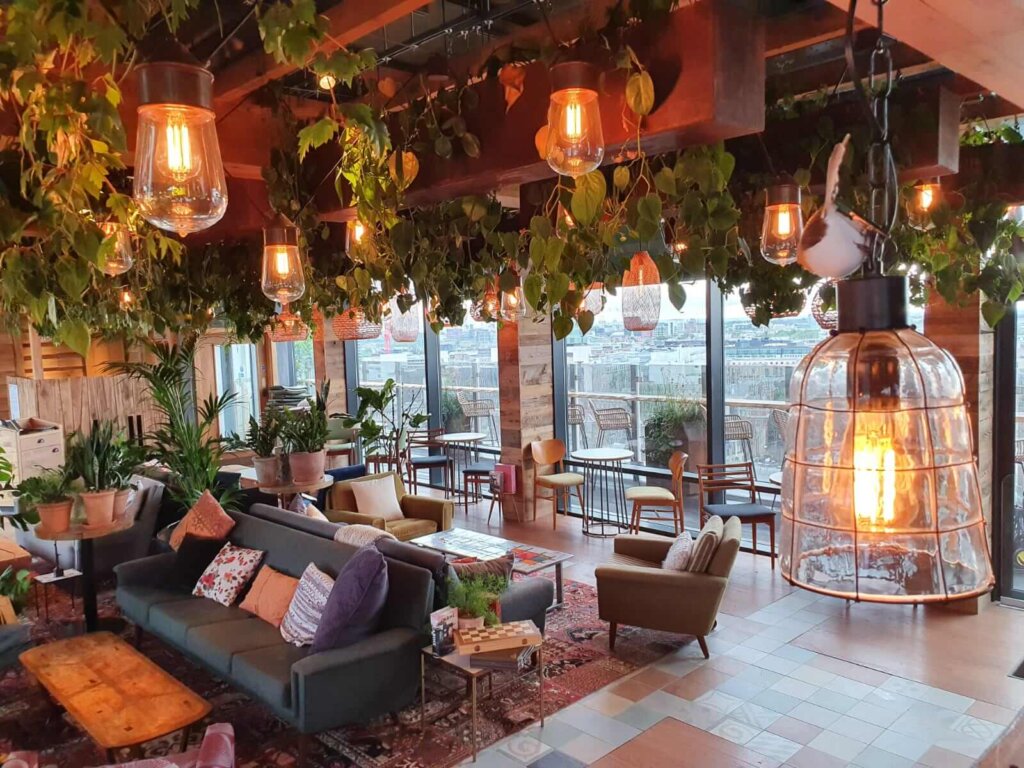Biophilia is a current buzzword in the world of well-being and workplace design. Planteria Group has written a White Paper on the subject, and there are lots of excellent in-depth pieces of work backed by research if you want to discover all aspects of this fascinating topic.
This blog article serves as a bite-sized look at one of the aspects of Biophilia…. the different types of Biophilic Models that exist.
There are three pillar concepts to biophilia-based design.
1. Nature in The Space
This refers to adding natural elements into the built environment. This is perhaps the easiest and cheapest way to introduce Biophilia to the workplace or living space and gives people instant access to all the feelgood associations of biophilia. Think potted plants and animals – for example fish tanks, office dogs and pets. Views to nature from the inside of the building, natural light, and direct access to nature like courtyards, gardens and roof terraces planted with greenery, also fall into this category. These direct connections to nature have the strongest impact on us as humans.
2. Natural Analogues
This concept refers to man-made elements that mimic nature. Artificial plants, preserved moss walls, representational artwork, patterns and architecture that evoke nature are all examples of natural analogues. Furniture with organic rather than geometric shapes. Woodgrain and building materials mimicking shells and leaves used in interior of exterior decoration are all excellent illustrations of the use of natural analogues.
Many benefits can be reaped from including natural analogues into a space, including reduced stress levels increased feelings of well-being and improved levels of productivity.
3. Nature of the Space
This concept refers to the physiological way in which space planning and architectural design affect our human responses and feelings. As a species we have evolved over millennia and our success is partially due to our ability to connect with nature. We are intuitively drawn to environments that will serve us and allow us to thrive or, entice us to explore. For this reason we find a Savannah landscape, with broad vistas of rolling pastures and a source of water such as lakes or a view of the sea to be the most attractive view.
We also find views involving mystery or even risk and peril as exciting, this explains our love of skyscrapers, and multilevel views such as mezzanines, atriums and spiral staircase as intriguing. Architects have capitalised on our innate affinity for these types of environments in their building designs.
Gaining more knowledge and insight into this subject is helping decision makers in the world of workplace management, design and build for happier and healthier businesses of the future.
Sources and Suggested Reading:
The Economics of Biophilia – Why Designing with Nature in Mind Makes Financial Sense. 2012 Terrapin Bright Green LLC
https://www.terrapinbrightgreen.com/reports/the-economics-of-biophilia/
Biophilia (1984) New Ed by EO Wilson (ISBN: 9780674074422)
Human Spaces: http://humanspaces.com/
Planteria Group Biophilia white paper:
https://www.planteriagroup.com/blog/biophilia-white-paper-/29
Kellert et al., 2008
Biederman & Vessel, 2006
https://www.terrapinbrightgreen.com/reports/14-patterns/
Edward O Wilson – “Biophilia”





